
We all know we should be getting our five portions a day of fruit and veg, and having two portions of oily fish each week, but do you actually know how much this is?
Don’t despair – you can judge how much you need of many common foods just by measuring it in your hand, says consultant dietician Sian Porter, Fellow and spokesperson for the British Dietetic Association.
It doesn’t matter what size your hand is – it will be in proportion to your body overall. So whether you're whipping up a nutritious and delicious salad or indulging in comfort foods, bookmark this visual guide to help you know how big a portion of salmon, pasta, vegetables, butter and more is for you.
Uncooked pasta and rice: two handfuls
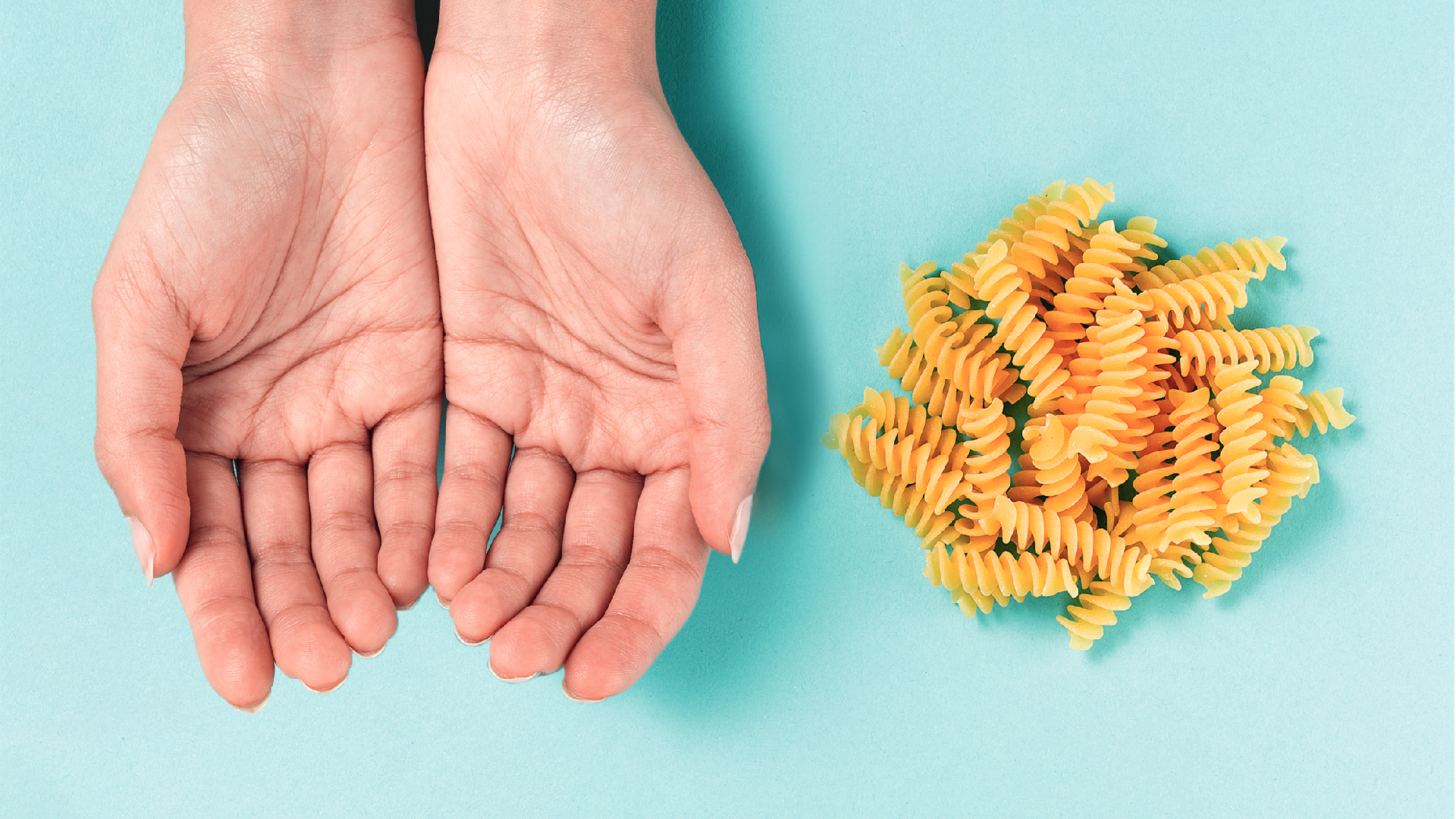
The recommended main-meal portion of 75g of uncooked pasta provides around 300 calories. Choose either wholemeal or brown over white pasta or rice.
Fruit: cupped palms
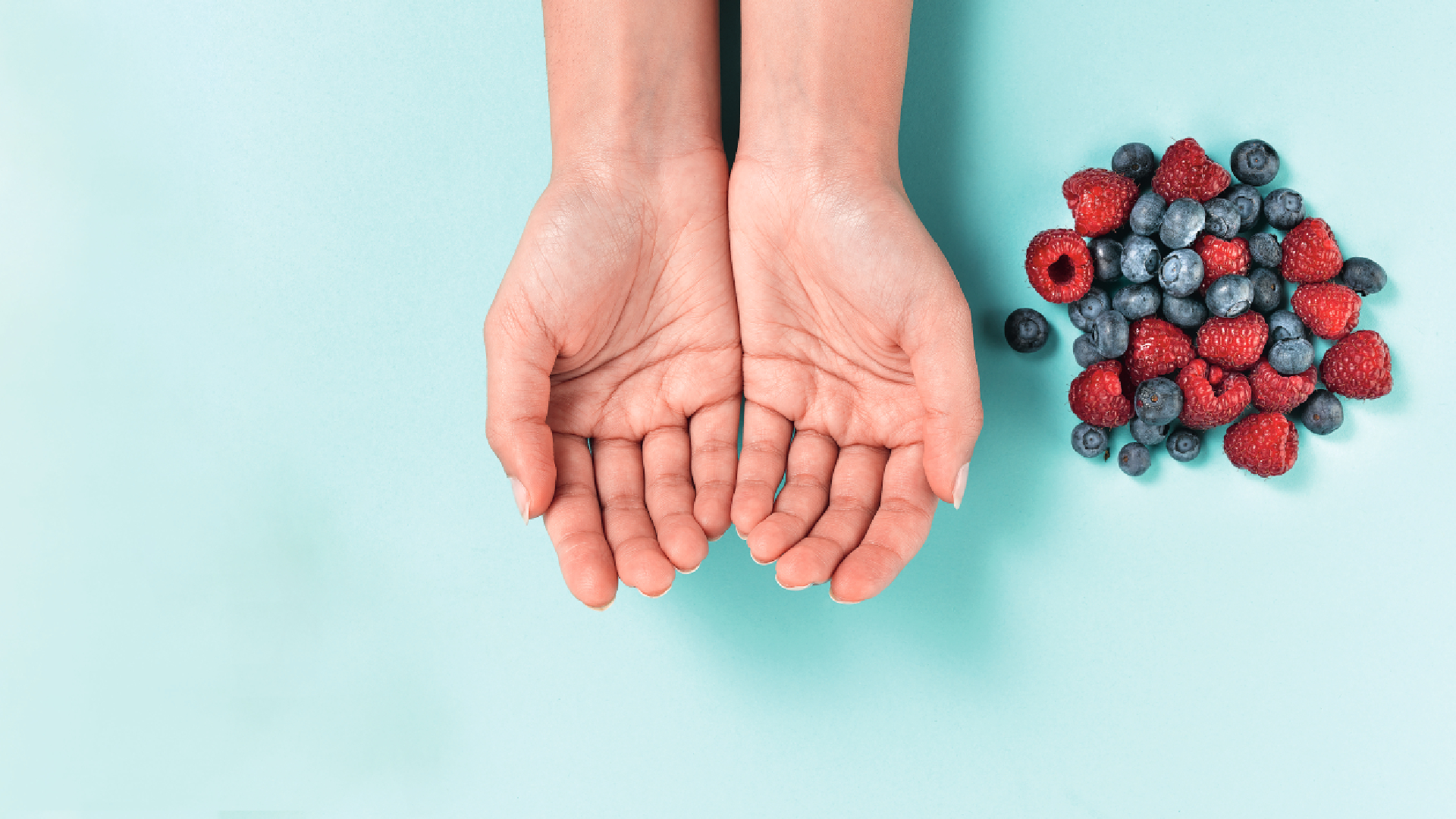
You need 80g of fruit for your five-a-day. To measure a portion of small fruit, like berries, pile them into cupped palms – but don’t worry about eating more.
Potato: clenched fist
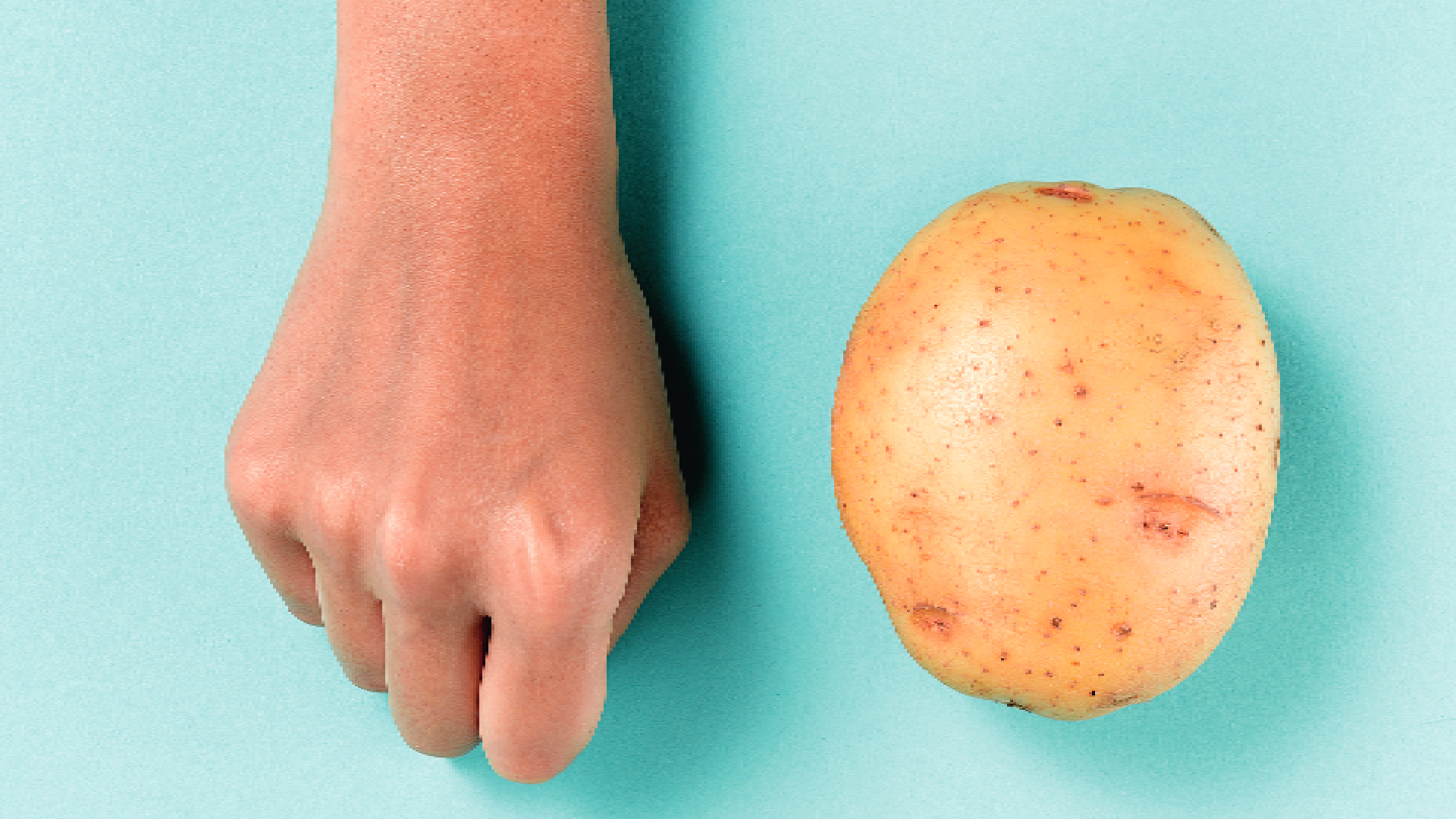
A baked potato adds up to around 200 calories of the carbs you need for energy – and it’s the same for mash. Choose sweet potato for a healthier option.
Meat: palm
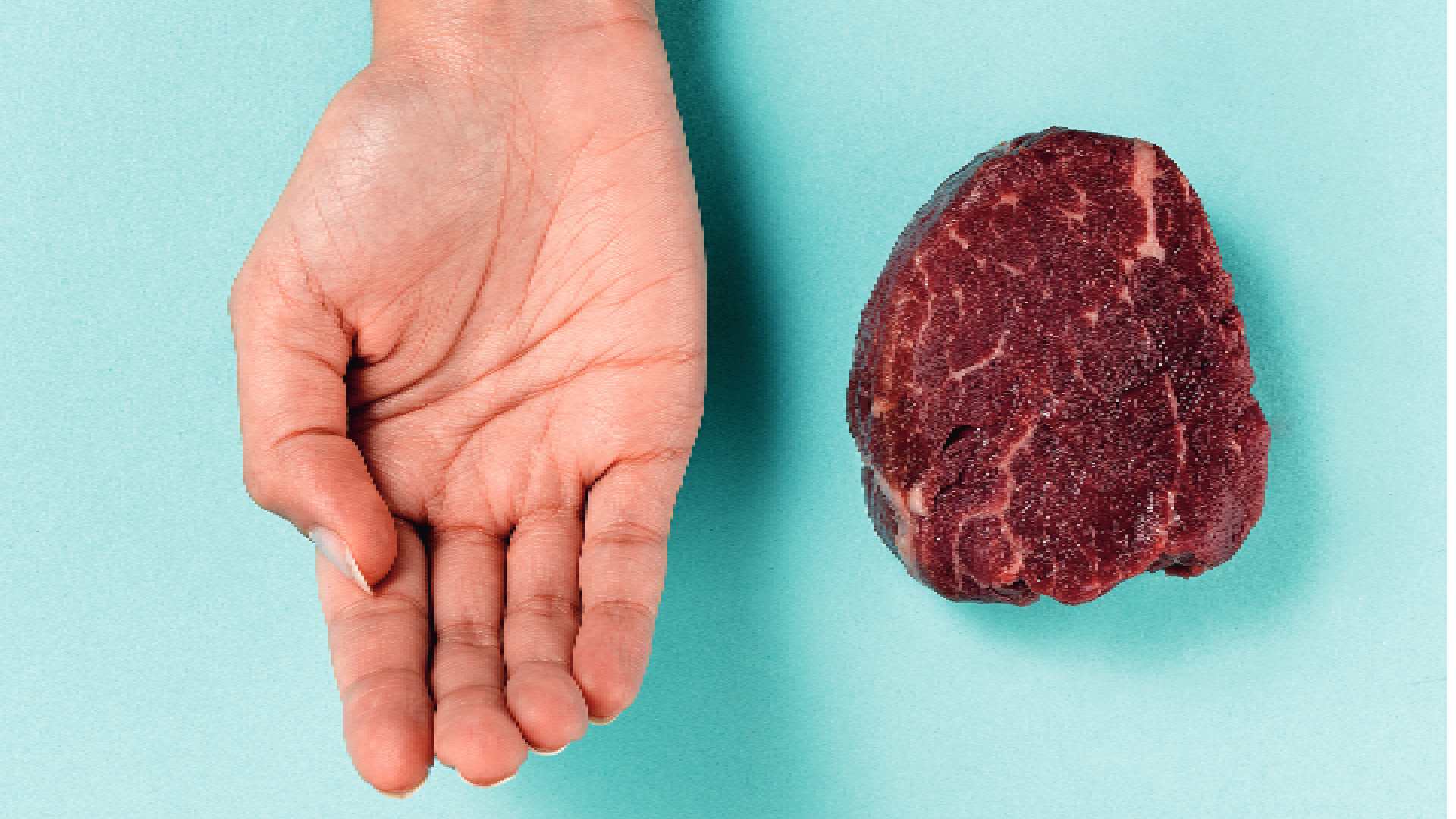
Aim to keep a portion of red meat the size of your palm (without fingers), about 70g. Always choose lean options: steak or good quality, low-fat mince, for example. No more than 500g in a week.
Nuts: palm
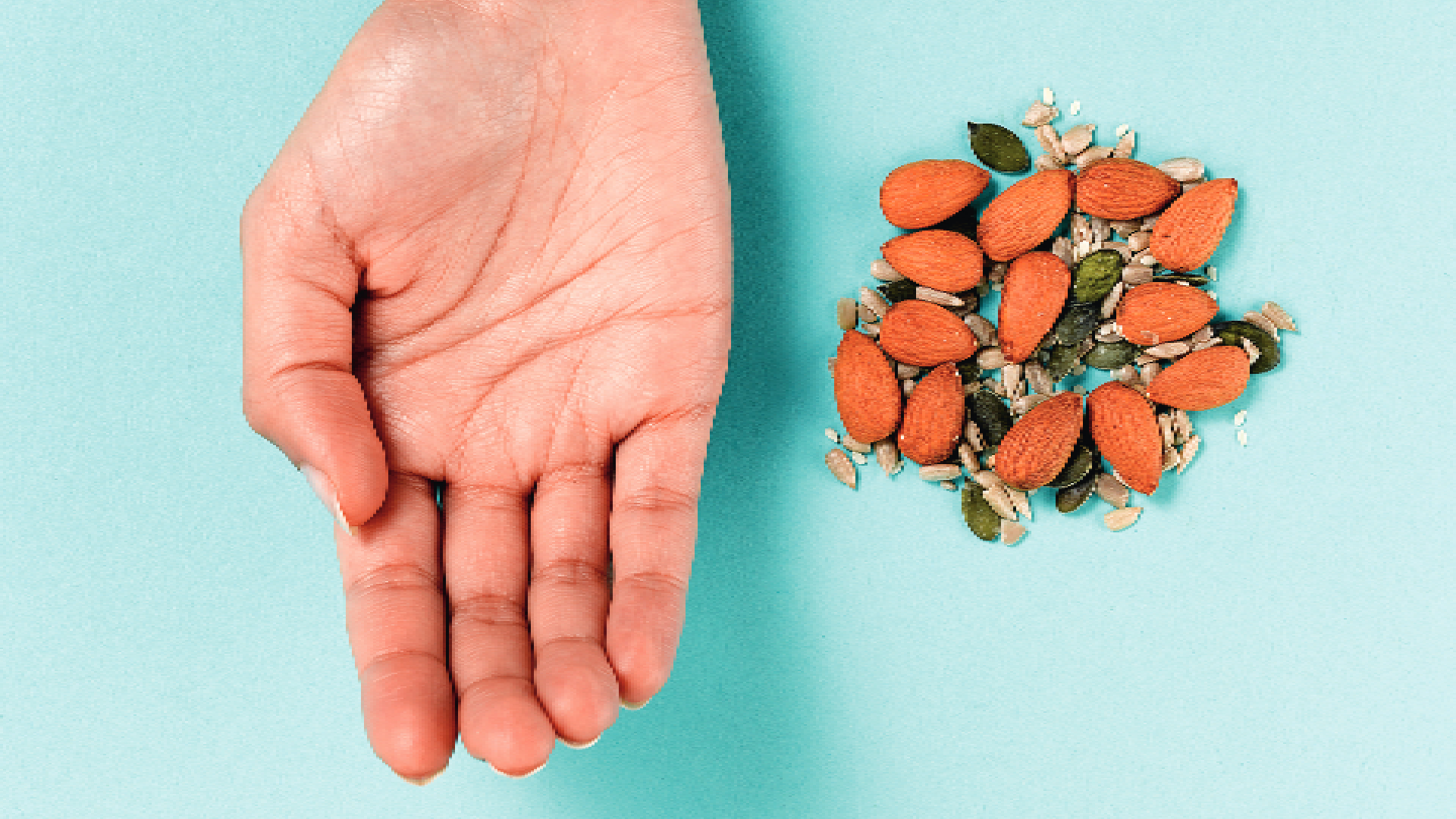
A great snack option, unsalted nuts are filling and contain important unsaturated fats, which are essential for a healthy heart, hair and skin. The right portion size should fit into your cupped palm.
Chocolate: index finger
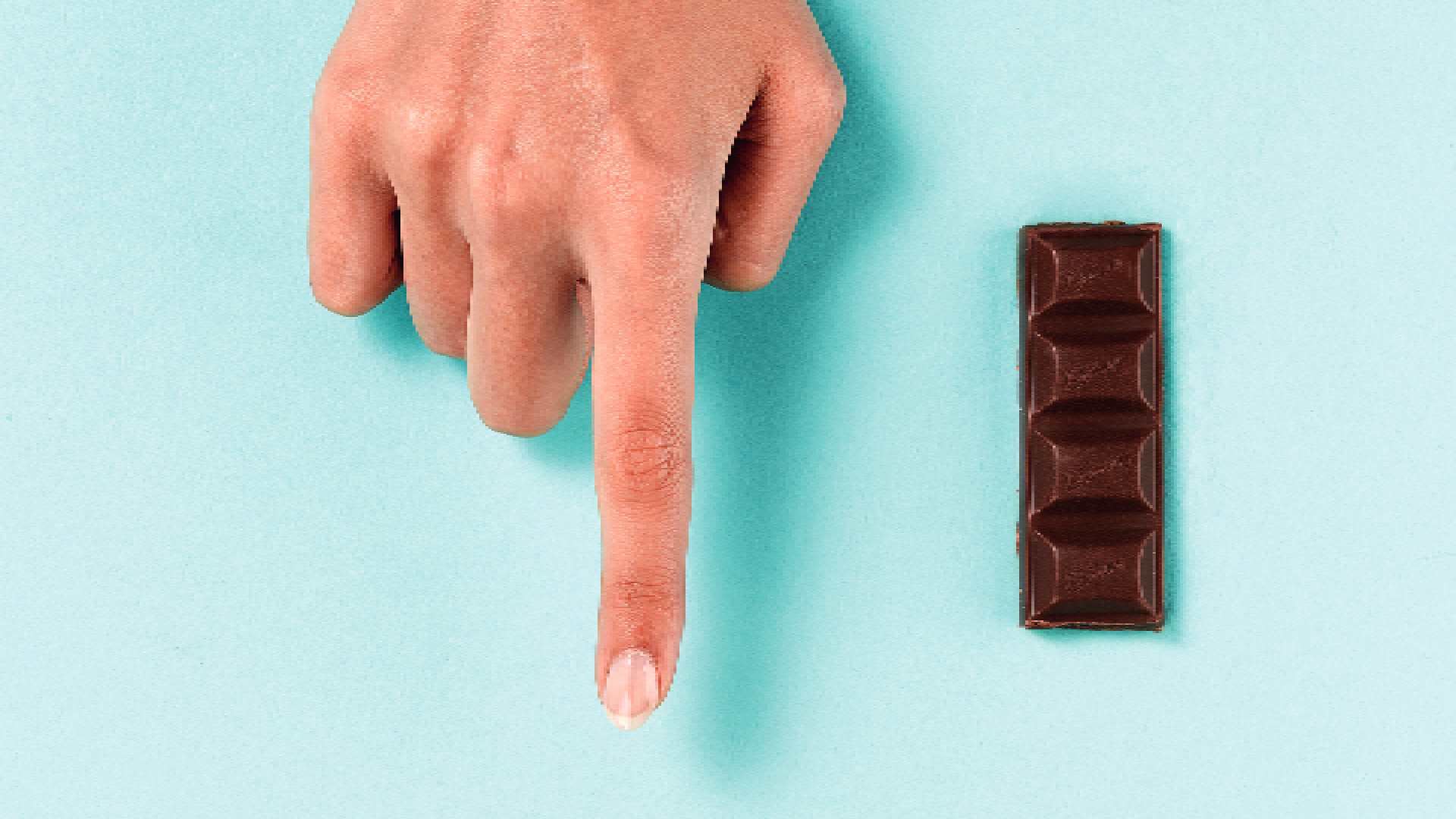
A few squares of milk chocolate a day, around 25g in weight, is usually about 130 calories. Want a sweet treat? Opt for dark, high-cocoa-content chocolate.
Oily fish: palm
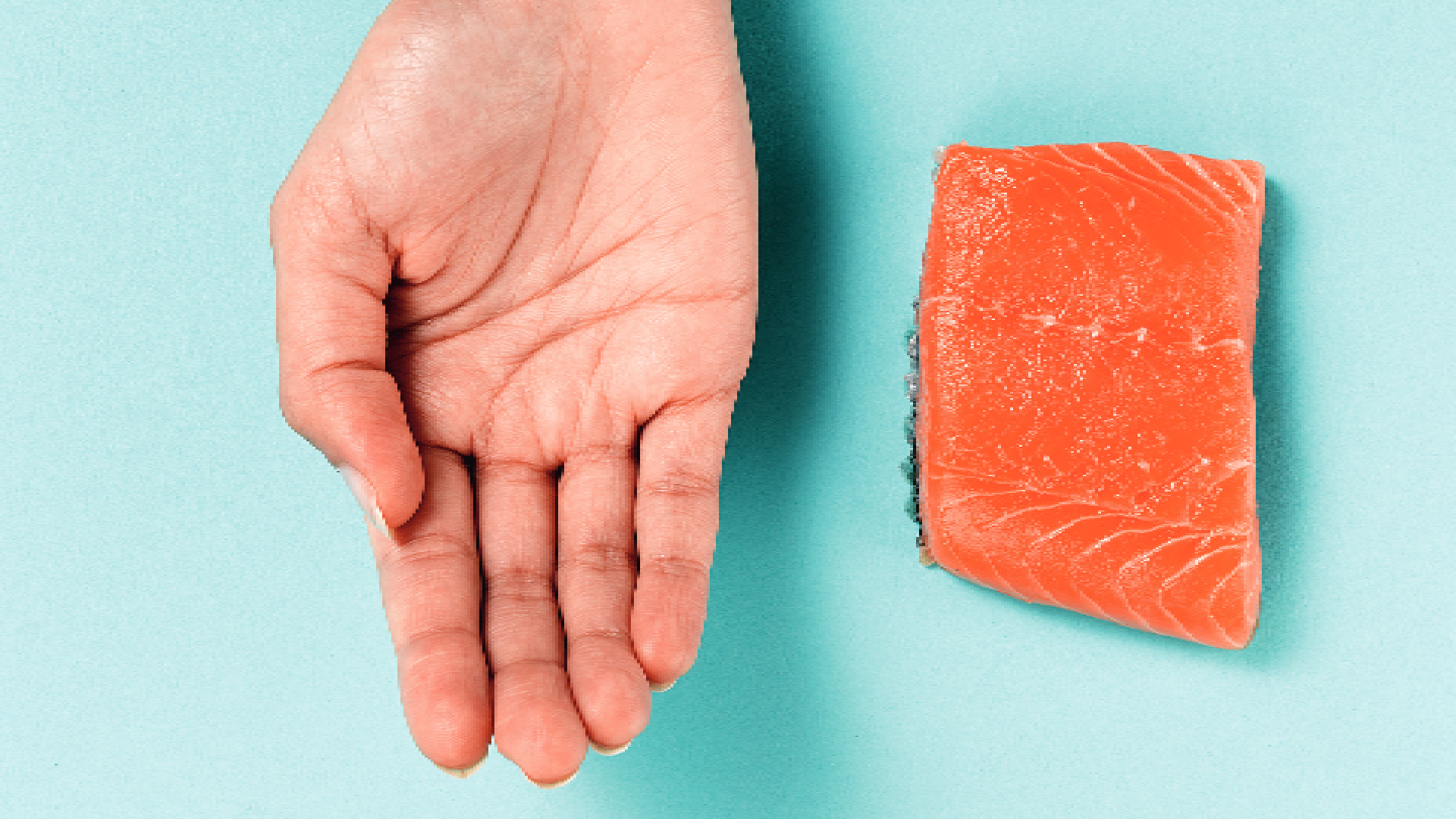
You should eat around 140g of oily fish, like mackerel, salmon and tuna, twice a week. Oily fish is rich in omega oils and essential for good heart function.
Vegetables: clenched fist
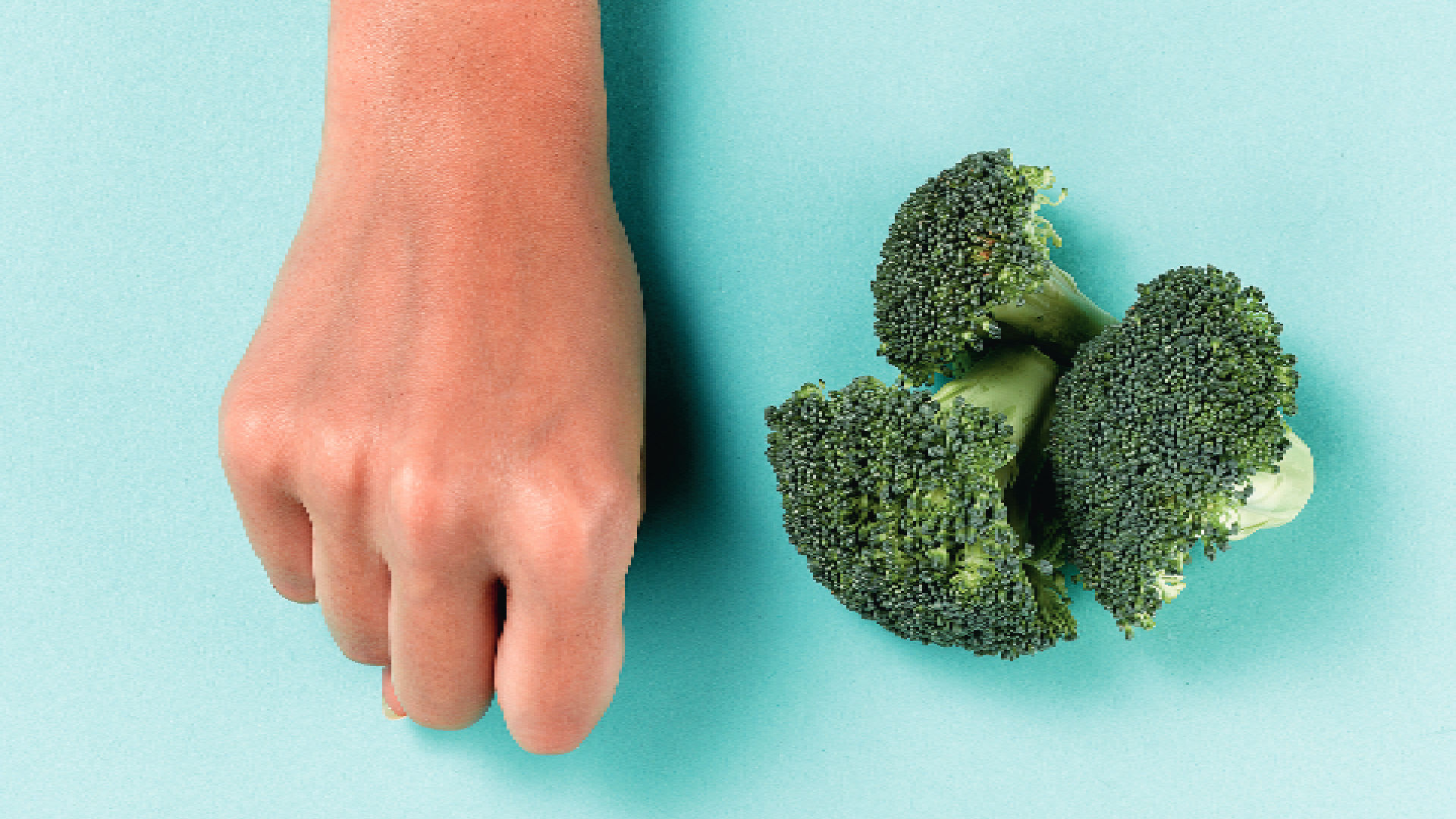
Measuring veg by eye, based on a clenched fist, works out at about the 80g you need as one serving. Mix up carrots, broccoli and sweetcorn for variety.
Butter: thumb tip
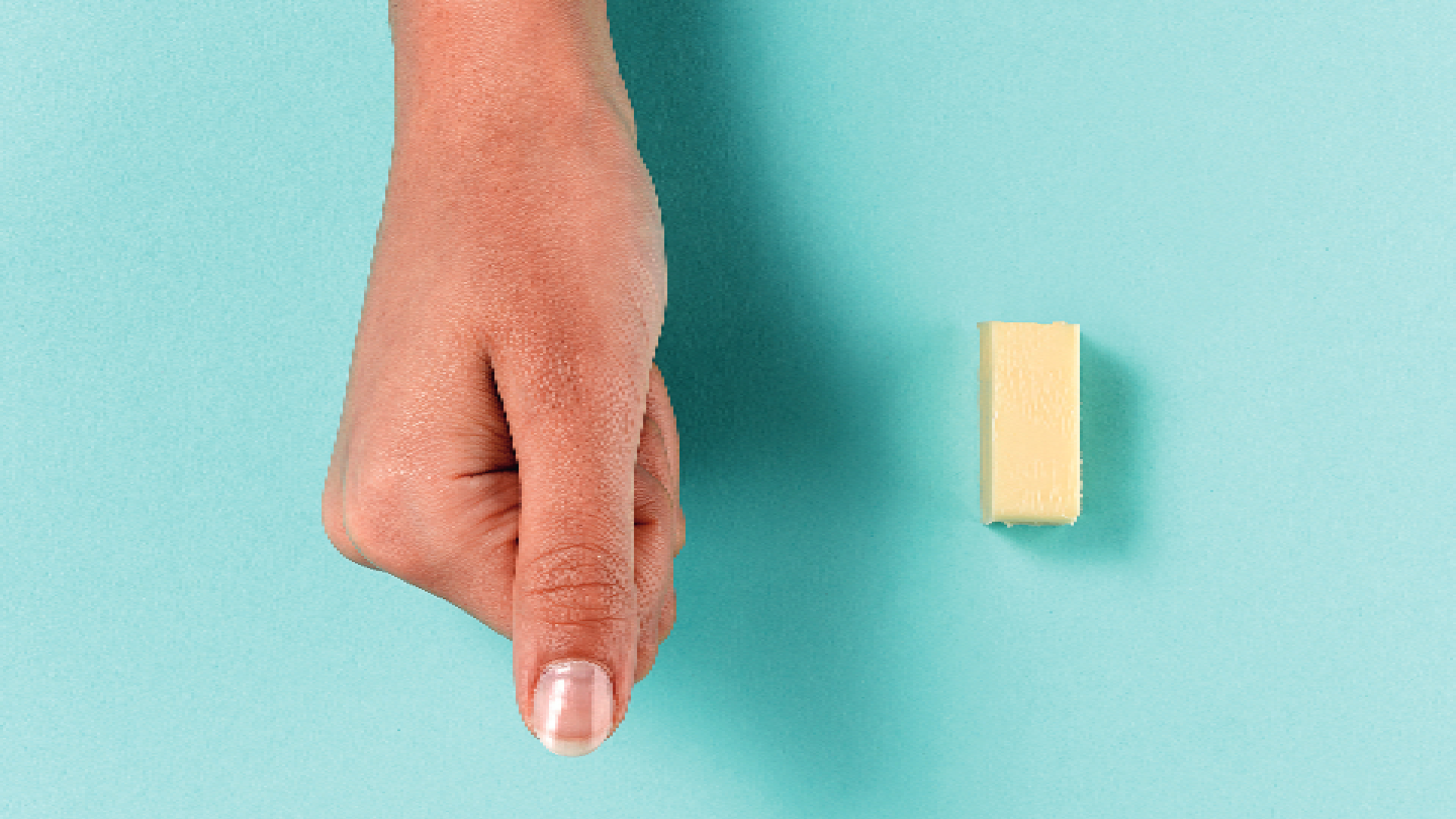
Butter and oil should be eaten in portions no bigger than a teaspoon or thumb tip. Try to have no more than two portions a day.
Cheese: two thumbs
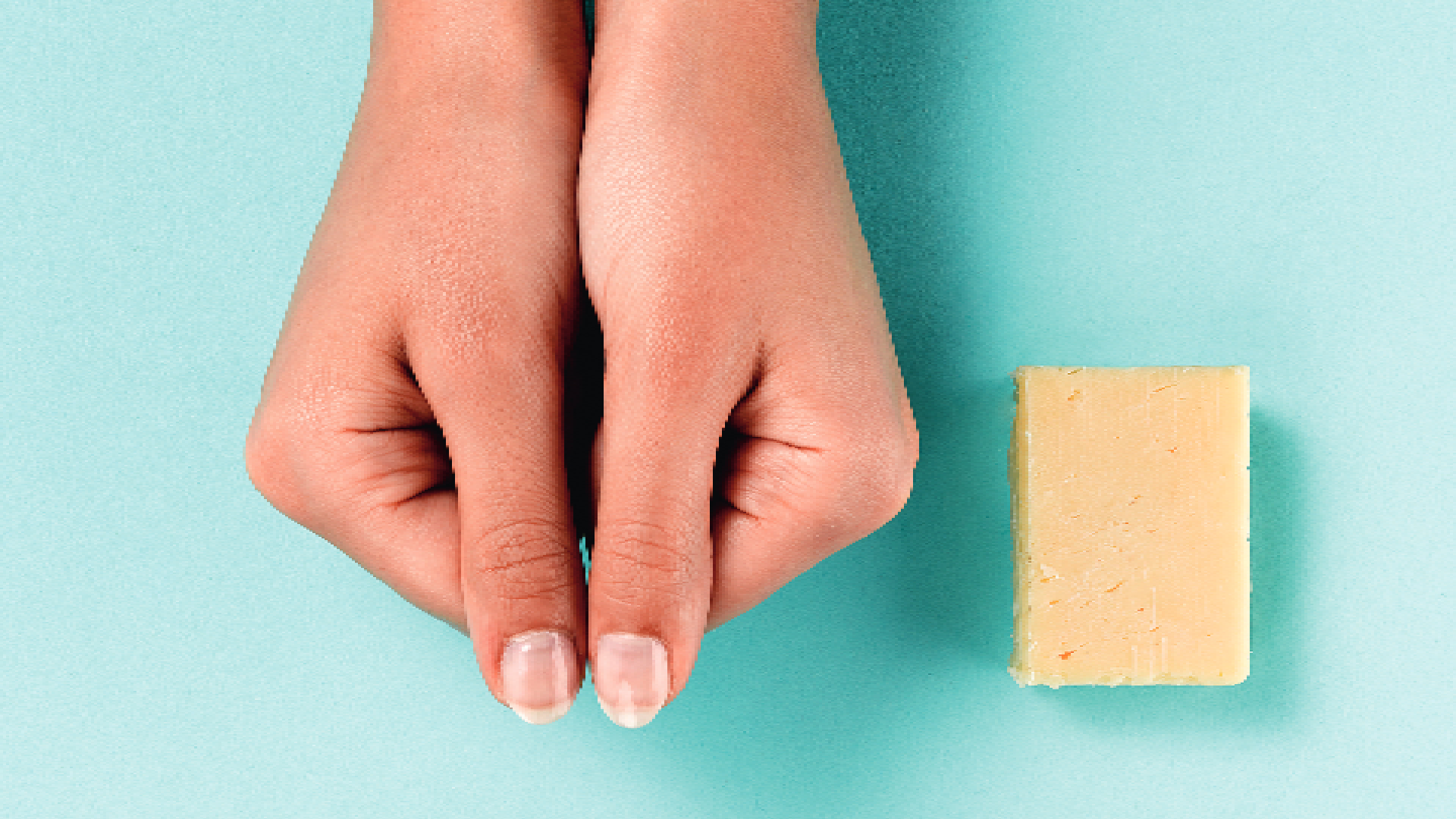
Protein-rich, but fairly high in fat, it’s best to stick to around 30g of cheese a day – which works out at around 125 calories.
White fish: whole hand

White fish, such as haddock and cod, is lower in fat and calories than meat or oily fish (usually less than 100 calories per 50g), and boosts the immune system.
This article first appeared in the March 2025 issue of woman&home magazine. Subscribe to the magazine for £6 for 6 issues.







